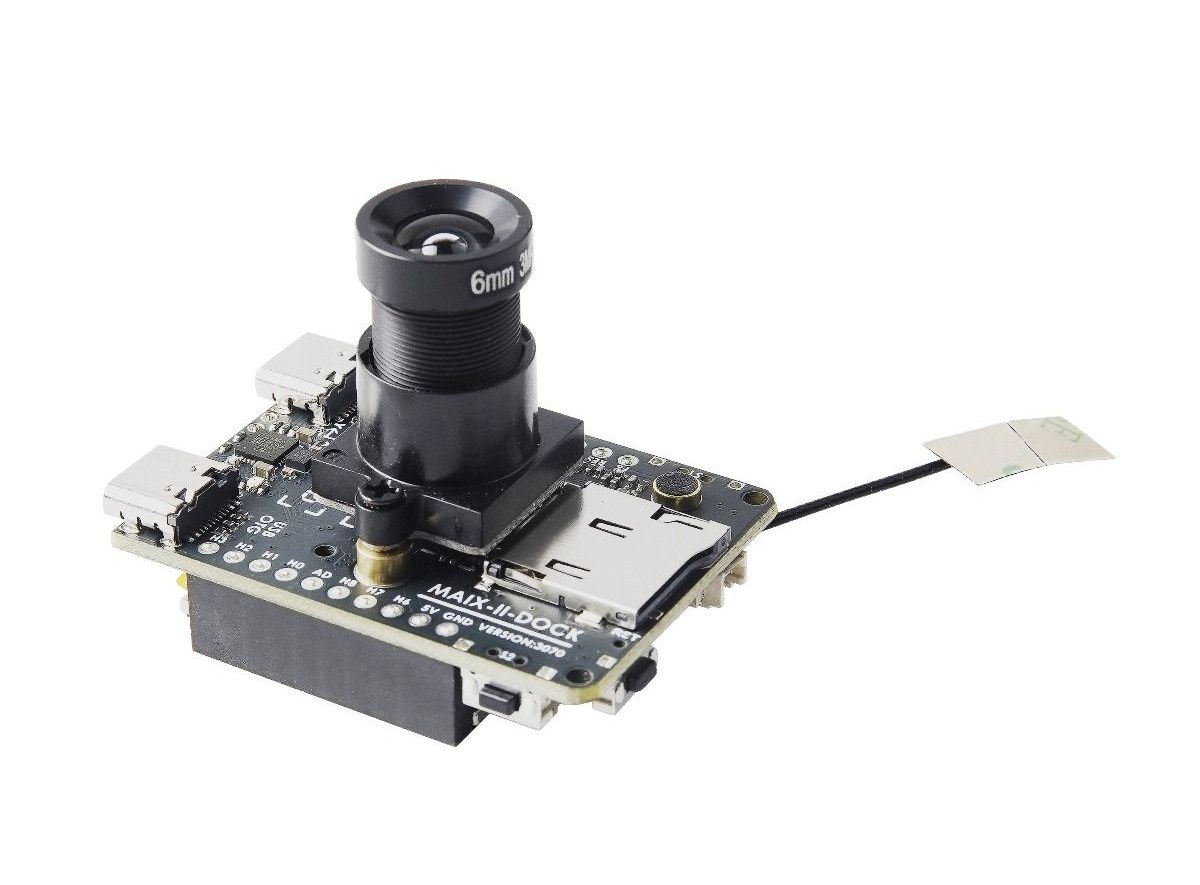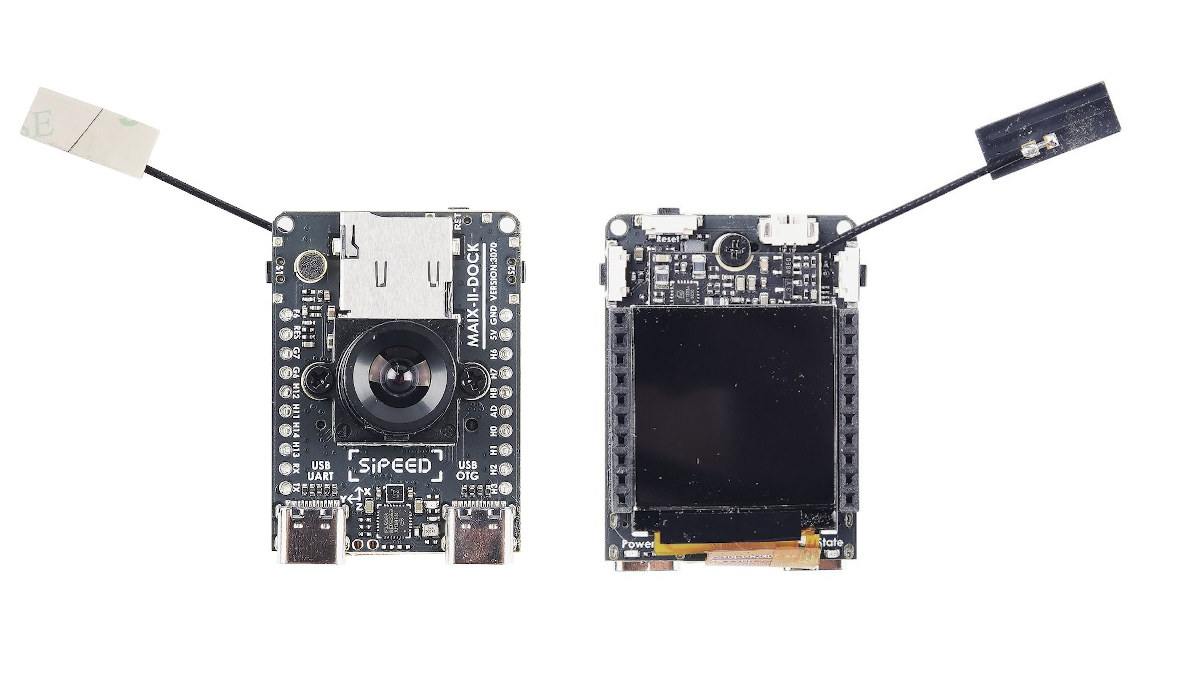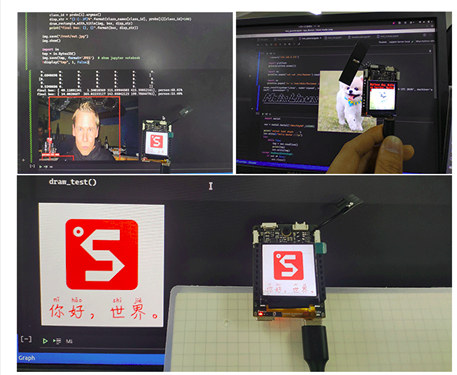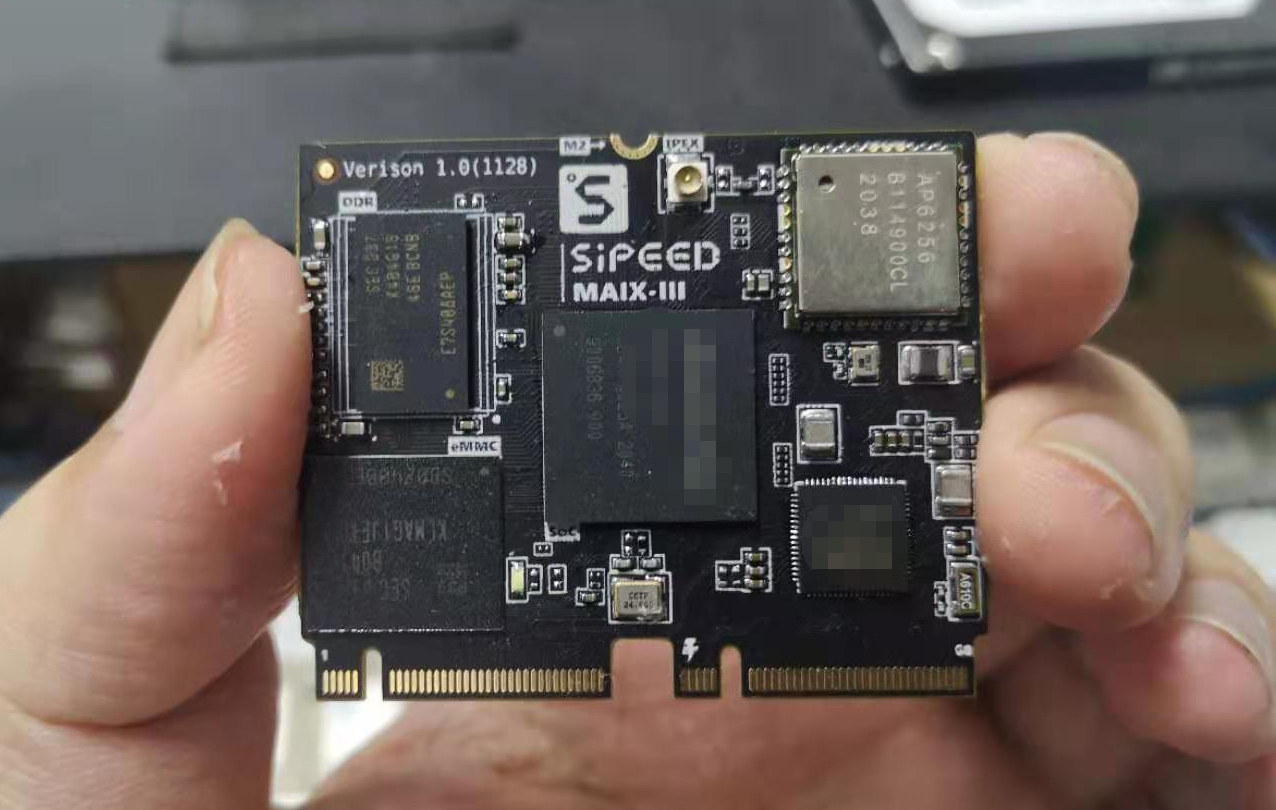Sipeed introduced MAIX development boards powered by Kendryte K210 dual-core RISCV processor with AI accelerators in 2018, and we tested the Maixduino and Grove AI HAT based on the solution using Arduino and Micropython the following year. It works fine for audio and video project requiring AI acceleration at low power, but performance (resolution/fps) is limited.
So if you’d like a bit more oomph for your audio & vision AI projects, as well as proper Linux support, Sipeed has just launched MAIX-II Dock powered by Allwinner V831 Cortex-A7 AI camera SoC clocked at up to 800-1000 MHz and 64MB on-chip DDR2 RAM, as well as a Full HD camera and a small display.
- MAIX-II core module
- SoC – Allwinner V831 single-core Cortex-A7 processor clocked at 800-1000 MHz with 0.2TOPS AI accelerator, H.264/H.265/JPEG video encoder up to 1080p30
- System Memory – 64MB DDR2 in package (SiP)
- Storage – Optional 16MB flash
- M.2 B-Key edge connector with
- Storage – 2x SD/MMC host controller(SMHC) interfaces.
- Camera – 2-lane MIPI up to 1080p60
- Display – Support for 8-bit MCU LCD and up to 10-inch RGB LCD via an adapter board
- Networking – 10/100M Ethernet
- Audio – Line Out, Mic In
- Low-speed I/Os – 2x SPI, 4x I2C, 1x I2S, 1-channel 6-bit LRADC for keys
- Power consumption – 50mA (idle); Voltage not speficied, probably 5V.
- Dimensions – 22.1 x 24.9 x 3.0 mm
- MAIX-II Dock “baseboard”
- M.2 Key socket for MAIX-II core module
- Storage – 1x MicroSD card slot
- Display – 1.3-inch IPS screen with a 240×240 resolution
- Camera – 1080p30 camera based on Omnivision SP2305 2MP sensor and 6mm focal length M12 lens by default
- Audio – Built-in 8Ω 1W speaker connected to 2-pin header, built-in microphone
- Connectivity – Realtek RTL8189FTV WiFi 4 module connected via SDIO, plus IPEX antenna connector
- USB – 2x USB Type-C ports, one OTG port, one for debugging via GD32F150G8 chip.
- Sensor – 3-axis accelerometer
- Expansion – 2x 10-pin female headers for I/Os (2.54mm pitch)
- Misc – Power and user LEDs, Reset button, 2x user buttons,
- Power Supply – 5V via either USB-C ports
- Power Consumption – 490mA under load (NPU + display + camera + WiFi)
- Dimensions – Full kit: 48.9 x 33.9 x 36.1 mm


If you’d still like to give the platform a try, Sipeed Maix-II Dock is now up for pre-order on Seeed Studio for $28.80 with shipping slated to start on January 15th.
Note that while the overall system performance is much higher, the AI performance may be similar as both Kendryte K210 and Allwinner V831 include a ~0.2 TOPS AI accelerator. But do not despair as Sipeed is already working on the third generation MAIX hardware, and recently teased us with MAIX-III powered by a new (Rockchip?) processor with A 1.5TOPS NPU (vip9000) and the platform, scheduled for release in February 2021, will also come with dual-band WiFi, Gigabit Ethernet, and 512MB to 2GB DDR3.


Jean-Luc started CNX Software in 2010 as a part-time endeavor, before quitting his job as a software engineering manager, and starting to write daily news, and reviews full time later in 2011.
Support CNX Software! Donate via cryptocurrencies, become a Patron on Patreon, or purchase goods on Amazon or Aliexpress




